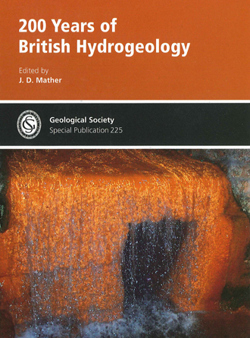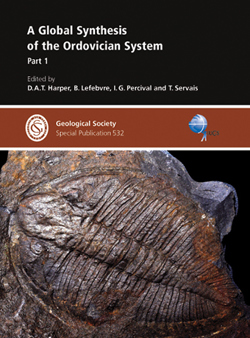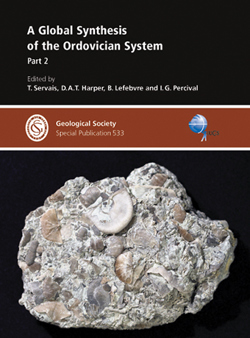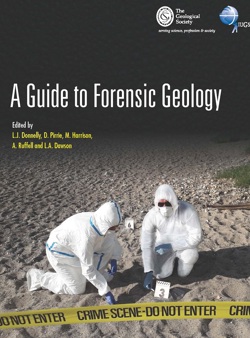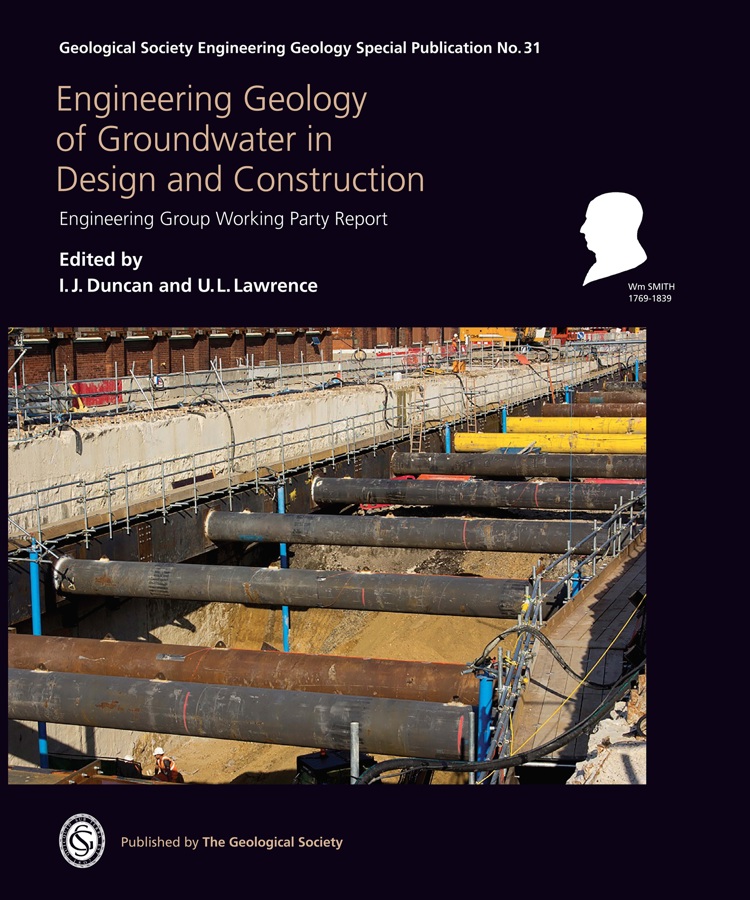
Engineering Geology of Groundwater in Design and Construction: Engineering Group Working Party Report
Product code: SPE31
Print publication date: 09/09/2025
Geological Society of London, GSL Engineering Geology Special Publications, Engineering Geology, New
Type: Book (Hardback)
Binding: Hardback
ISBN: 9781786206367
Author/Edited by: Edited by I.J. Duncan and U.L. Lawrence
Weight: 1.25kg
Number of pages: 426
Online publication date: 28/08/2025
Lyell Collection URL: https://www.lyellcollection.org/toc/egsp/31/1
£170.00
Log in for your member priceFull Description
Engineering Geology Special Publication 31
The majority of ground engineering projects encounter water in one way or another. Delays and unforeseen costs inevitably follow when that encounter is unexpected, and the impacts can affect a surprisingly large area. To understand and manage the risks associated with groundwater, expertise is required in the areas of hydrogeology, hydrology, engineering geology, land quality, risk management, communication and planning. In view of the wider context that groundwater plays in support of our society, economy and environment, this Engineering Group Special Publication has been produced, offering best practice guidance and providing a general overview of groundwater in engineering geology, including modelling, risks and management.
This book provides a state-of-the-art review and guidance for the management of risks associated with groundwater during design and construction of engineering projects. Engineering Geology of Groundwater in Design and Construction is intended to be practical, informative and to be of use to a wide spectrum of readers from a diversity of backgrounds and employments.
Preface
Members of the Working Party
Acknowledgements
Working Party acronyms
List of symbols
Chapter 1 Introduction
1.1 Purpose and scope
1.2 What is groundwater and why is it important?
1.3 The vocabulary for groundwater
1.4 Groundwater considerations for design and construction
References
Chapter 2 Engineering geological principles of groundwater
2.1 Purpose of this chapter
2.2 The hydrological cycle and engineering geology
2.3 Groundwater levels and groundwater flow in steady-state systems
2.4 Geological aspects of hydraulic conductivity
2.5 Non-steady-state flow
2.6 Flow through fractures and conduits
2.7 Patterns of flow associated with engineering works
2.8 Solute and heat movement in groundwater systems
2.9 Flow in the zone above the water table; recharge estimation
2.10 Conclusions
References
Chapter 3 Problems caused by groundwater
3.1 Groundwater problems
3.2 Problems associated with groundwater flow
3.3 Problems associated with groundwater pressures
3.4 Dynamic groundwater pressure effects
3.5 Problems associated with groundwater chemical effects
3.6 Groundwater problems associated with underground works
3.7 Groundwater contamination aspects
3.8 Groundwater problems in the future
References
Chapter 4 A framework for groundwater risk management
4.1 Using models to identify hazards and quantify risk
4.2 Ownership and communication of risk through the project
4.3 Summary of key points
References
Chapter 5 Conceptual models
5.1 Conceptual model frameworks and components
5.2 Data and information sources for conceptual modelling
5.3 Technology and tools for conceptual model development
5.4 Incorporating environmental conditions in conceptual models
5.5 Developing conceptual models for construction projects
5.6 Conceptual model requirements for mathematical models
References
Chapter 6 Observational models: quantifying the conceptual model through investigation
6.1 Designing investigations
6.2 Geotechnical investigation
6.3 Groundwater investigation
6.4 Hydrogeological investigations
6.5 Comparison of methods for determining hydraulic conductivity
6.6 Presenting and interpreting observational data
6.7 Key points
References
Chapter 7 Analytical models
7.1 Purpose and benefit of developing analytical models
7.2 Types of analytical model
7.3 How to select an appropriate type of model
7.4 Examples of commonly used models
7.5 How to select appropriate model inputs
7.6 How to assess the degree of confidence in a model
7.7 How to effectively communicate results
References
Chapter 8 Groundwater control
8.1 Control of surface water
8.2 Types of groundwater control
8.3 Pumping methods
8.4 Groundwater control by exclusion
8.5 Operation and monitoring
References
Chapter 9 Managing groundwater in practice
9.1 Objectives for the design and implementation of groundwater management schemes
9.2 Regulation of construction-related groundwater management activities
9.3 Health and safety in design and construction
9.4 Guidance documents and design codes
9.5 Monitoring and record keeping
9.6 Decommissioning
References
Chapter 10 Managing groundwater in the engineering design and construction of surface works
10.1 Groundwater management applications for surface excavations
10.2 Groundwater management applications for surface structures
10.3 Groundwater management applications for slopes
10.4 Groundwater management applications for embankments and other filled earthworks
10.5 Groundwater management in relation to soil particle movement
10.6 Groundwater management applications for dams, hydraulic structures and water-retaining structures
10.7 Groundwater management in relation to ground improvement
10.8 Groundwater management in relation to other effects
10.9 Instrumentation, monitoring, triggers and alerts
10.10 Climate change
10.11 Conclusions
References
Chapter 11 Managing groundwater in the engineering design and construction of subsurface works
11.1 Groundwater management applications for shaft construction
11.2 Groundwater management applications for tunnel construction
11.3 Long-term performance requirements for groundwater ingress in underground structures
References
Chapter 12 Case studies
12.1 Case study 1: Rainham landfill leachate head lowering
12.2 Case study 2: Sizewell B power station, Suffolk, UK
12.3 Case study 3: Cow Green Reservoir
12.4 Case study 4: HS1 Thames Tunnel, London, UK
12.5 Case study 5: Humber estuary gas pipeline launch pit
12.6 Case study 6: A55 North Wales Coast Road – Conwy Crossing
12.7 Case study 7: Itezhi-tezhi Dam, Zambia
12.8 Case study 8: hydraulic failure of the base of the shaft, northern England, UK
12.9 Case study 9: the Malpasset Dam failure: a case study in the influence of groundwater, France
References
Index
